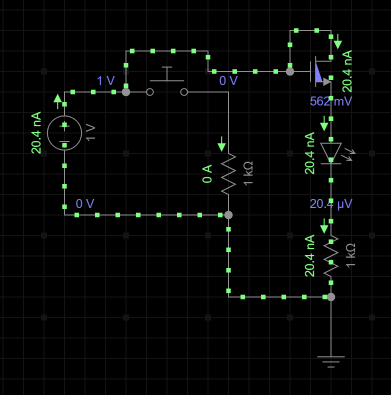I'm trying to add a reset button to my circuit which will temporarily cut the power to the circuit when a button is pressed.
I thought about using a transistor, and short-circuiting the gate to ground via a resistor. This works in EveryCircuit, but not on the breadboard.
My circuit uses an N-channel MOSFET.
The circuit below should be 5 V, and the same problem occurs with 5 V.
Is EveryCircuit not modelling reality correctly, do I have the wrong solution, or perhaps it's the correct solution but I've wired up the breadboard incorrectly? What could be a better solution to this problem (other than using a physical toggle switch)?




